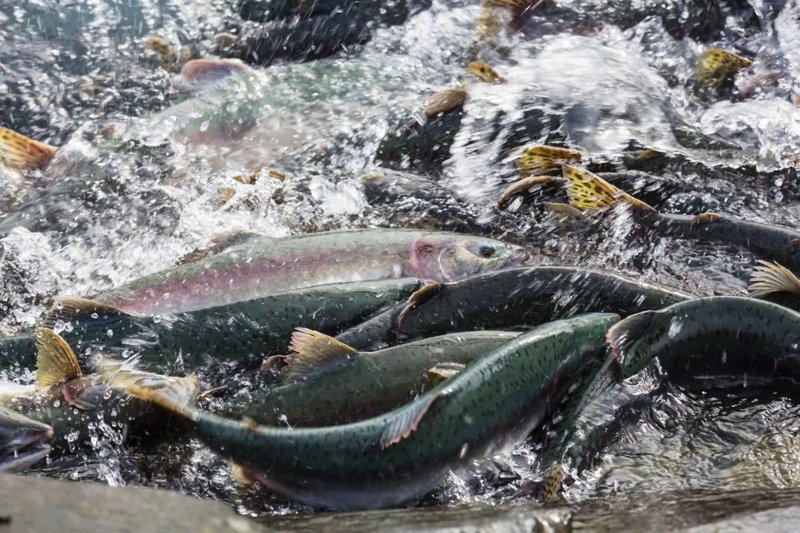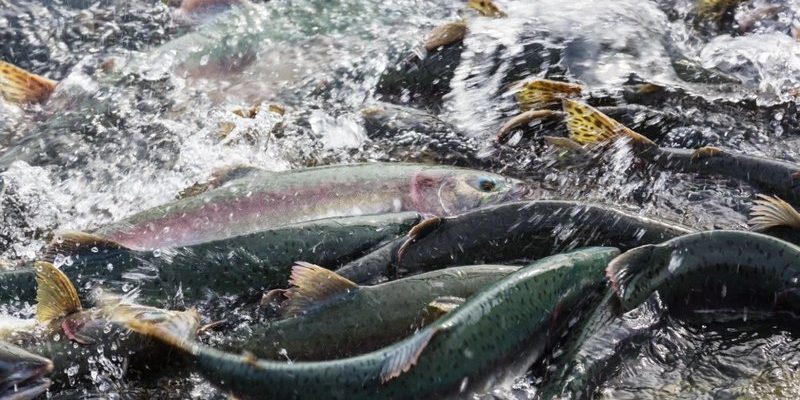
Now, before you start picturing fields of fish swimming around in neat rows, let’s break it down. Salmon farming involves raising fish in controlled environments. It might sound straightforward, but several factors come into play when determining whether it’s a lucrative venture or a financial sinkhole. Let’s pull back the curtain and explore what makes salmon farming tick.
The Basics of Salmon Farming
So, what exactly is salmon farming? At its core, it’s about breeding and raising salmon in artificial environments, often in large tanks or ocean pens. Think of it like creating a mini ecosystem where you control factors like water quality, feeding, and health. You’re essentially cultivating a resource that meets the demands of both markets and consumers.
To give you a clearer picture, here’s what salmon farming typically involves:
- Hatchery: This is where salmon eggs are fertilized and incubated until they hatch into fry.
- Grow-out phase: The young fish are transferred into larger tanks or nets until they reach market size.
- Harvest: Once the fish grow to a certain weight (usually between 6-12 months), they’re harvested and prepared for sale.
Understanding this process helps you grasp the complexities of running a salmon farm. Each phase requires investment and careful management to maximize outputs—both in terms of fish quality and quantity.
Startup Costs in Salmon Farming
You might be wondering what it costs to dive into the salmon farming business. Honestly, it’s not just pocket change. Initial investments vary widely based on your location, scale of operation, and technology employed. Let’s highlight some of the typical expenses you might encounter:
- Land and Infrastructure: You’ll need a suitable location and facilities for breeding and raising salmon. This includes hatcheries, tanks, and feeding systems.
- Equipment: High-quality nets, water filtration systems, and feeding machinery can all add up.
- Licensing and Regulations: Complying with local laws and securing necessary permits can be time-consuming and costly.
In total, startup costs can range from tens of thousands to millions of dollars. It’s crucial to create a detailed budget and business plan to ensure you’re prepared for these upfront expenses.
Operational Costs: What to Expect
Once your salmon farming operation is up and running, let’s talk about the day-to-day expenses. This is where things can get a bit tricky. Factors such as feed, labor, and maintenance are ongoing costs you’ll need to keep an eye on.
- Feed: Salmon are carnivorous, so high-quality feed is essential. This often takes up a large chunk of your budget since it needs to be nutritious and sourced sustainably.
- Labor: You’ll need a dedicated team to handle everything from feeding and monitoring fish health to managing the daily operations.
- Maintenance: Regular upkeep on equipment and facilities is necessary to ensure optimal conditions for the fish.
It’s important to remember that these costs can fluctuate based on market conditions. For instance, feed prices can rise, impacting your overall profitability. Keeping a close watch on your operational expenditures is key to maintaining a healthy bottom line.
Revenue Streams: How Does Salmon Farming Pay Off?
Now, let’s flip the coin and look at the revenue side of fish farming. Where does the income come from? Generally, you’ll sell your farmed salmon in several ways. Here are a few avenues to consider:
- Direct Sales: You can sell your salmon directly to consumers, local markets, or restaurants. This often brings higher prices, especially if you build a reputation for high-quality, sustainable fish.
- Wholesale: Partnering with distributors or grocery chains can provide more volume, though at a smaller profit margin compared to direct sales.
- Value-added Products: Consider processing or packaging your salmon into fillets or smoked products. These can command a higher price and attract a broader customer base.
The key to maximizing revenue is to diversify your sales strategies. Relying solely on one avenue can leave you vulnerable to market fluctuations.
The ROI Equation: Is It Worth It?
So, what about the return on investment? To determine if salmon farming is profitable, you’ll want to calculate your ROI, which is the profit made relative to the costs incurred. A good rule of thumb is that an ROI of 10-20% is considered successful in agriculture.
Here’s how to break it down:
1. Calculate Total Costs: Add up all startup, operational, and maintenance costs over a specific period—usually a year.
2. Estimate Income: Based on your sales predictions, calculate your expected revenue from all sources.
3. Calculate ROI: Use the formula:
ROI = (Net Profit / Total Costs) x 100
This will give you a percentage that indicates your profitability.
A positive ROI suggests that your investment is paying off. However, be prepared for the ups and downs of market demand, environmental factors, and regulations that can influence your returns.
Challenges in Salmon Farming
Let’s be real—while salmon farming has the potential to be profitable, it’s not without challenges. Here are some common hurdles you might face:
- Environmental Impact: Ensuring sustainable practices is crucial. Over-farming or poor management can harm local ecosystems.
- Diseases: Fish health is vital. Outbreaks can decimate stocks and hit your profits hard.
- Market Competition: As the demand for salmon increases, so does competition. You’ll need to stand out with quality and sustainability.
Facing these challenges requires diligence and a proactive approach. If you can navigate them successfully, you can set yourself up for a thriving salmon farming business.
The Future of Salmon Farming
As we look ahead, the future of salmon farming appears bright, despite challenges. With the world becoming more health-conscious and seeking sustainable food sources, farmed salmon will likely remain in demand. Innovations in technology and sustainable practices can improve both efficiency and profits.
You might be wondering where to start if you’re considering diving into this venture. Honestly, it’s about doing thorough research, creating a comprehensive business plan, and perhaps even starting small. Just remember, consistency and care can lead you to success.
In conclusion, salmon farming can be profitable, but like any business, it requires careful planning and management. Understanding your costs, revenue opportunities, and challenges will help you make informed decisions. By approaching it thoughtfully, you can create a sustainable operation that benefits both your wallet and the environment.

